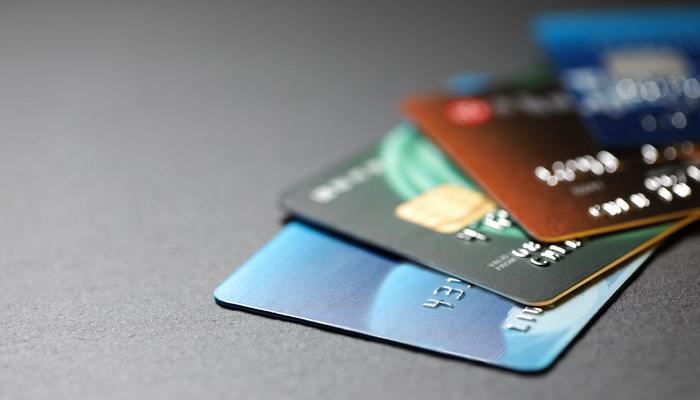How to Choose the Best Credit Card: A Complete Guide to Make the Right Decision
Choosing the best credit card may sound simple—until you face dozens of options, each promising amazing rewards. Cashback, travel points, no annual fee, high credit limits—where do you even begin?
Advertising
If you live in the United States and want to make an informed choice, this guide is for you. We’ll walk you through everything you need to know, with examples and practical tips to help you choose the ideal card based on your lifestyle, income, financial goals, and even your credit score.
Why Choosing the Right Credit Card Matters
Advertising

A good credit card can:
- Reward you for purchases you already make.
- Help build a strong credit history.
- Protect your purchases with insurance and warranties.
- Offer travel perks like airport lounge access and rental car insurance.
- Save you hundreds of dollars per year in fees and interest.
Advertising
A bad card can do the opposite—costing you money and damaging your credit.
According to the Federal Reserve, the average credit card interest rate in the U.S. exceeded 20% annually in 2024. In other words, choosing poorly can be expensive—literally.
Step-by-Step: How to Choose the Best Credit Card
1. Define Your Purpose for the Card
Ask yourself: why do you need a credit card?
Different goals call for different types of cards:
| Profile | Best Type of Card |
|---|---|
| Frequent traveler | Cards with travel rewards and perks |
| Saver | Cards with cashback |
| Beginner | Student or starter credit cards |
| Low credit score | Secured or easier-approval cards |
2. Check Your Credit Score
In the U.S., your FICO score (300 to 850) plays a huge role in determining your credit options. The higher your score, the better the offers you’ll receive.
- 720 or higher: Excellent — qualifies for premium cards.
- 660–719: Good — access to most cards.
- 580–659: Fair — fewer options, higher rates.
- Below 580: Poor — consider secured cards.
You can check your score for free on Credit Karma, Experian, or through your bank.
3. Compare Fees and Costs
Many cards come with hidden costs. Pay attention to:
- Annual fee: Premium cards typically charge between $95 and $695 per year.
- APR (Annual Percentage Rate): The average rate ranges from 20% to 30%.
- Other charges: Late fees, cash advances, and balance transfer fees.
Pro tip: If you pay your balance in full each month, APR matters less. But if you tend to carry a balance, it’s crucial.
4. Look at Rewards and Perks
Rewards can be a game-changer. Here’s what to evaluate:
Cashback
You earn a percentage of your spending back as cash.
Example: Citi® Double Cash Card gives 2% on everything (1% at purchase, 1% when you pay).
Points or Miles
Best for travelers.
Example: Chase Sapphire Preferred® offers 2x points on travel and dining.
Additional Perks
- Airport lounge access
- Rental car insurance
- Extended warranties
- Fraud protection
5. Consider the Starting Credit Limit
Limits vary. Beginner cards often offer $300 to $1,000, while premium cards can go up to $10,000 or more for those with excellent credit.
Important: A low limit can hurt your credit utilization ratio, which impacts your score.
6. Look for Welcome Bonuses
Some cards offer great sign-up bonuses:
- $200 cashback after spending $500 in the first 3 months.
- 60,000 miles after spending $4,000 in 90 days.
Only go for these if you can responsibly meet the minimum spending requirements.
Flat-Rate vs. Category-Based Rewards: Which Is Better?
Should you go for flat-rate cashback or rewards by category?
Flat-Rate Cashback
Same rate on everything you buy.
Example: Citi® Double Cash Card gives 2% back—simple and predictable.
Category-Based Rewards
Higher rates in specific spending areas that may rotate quarterly (e.g., groceries, gas, dining).
Example: Discover it® Cash Back offers up to 5% in selected categories—activation required.
What’s Better?
If your spending is varied, a flat-rate card may be more beneficial. But if you can plan your spending, rotating categories might yield higher rewards.
How Credit Cards Affect Your Score
Your card choice impacts your credit score more than you might think. Here’s how:
- Credit utilization (30%): Keep usage under 30% of your limit.
- Payment history (35%): Never miss a due date.
- Length of credit history (15%): The older the card, the better.
- New accounts (10%): Don’t apply for too many cards at once.
- Credit mix (10%): Having different types of credit is positive.
Common mistakes: maxing out cards or missing payments. These will drag your score down fast.
Security: A Highly Overlooked Factor
With rising online fraud, security features should be part of your decision-making process.
Must-Have Security Features:
- Instant card freezing via app
- Real-time transaction alerts
- Two-factor authentication
- Virtual cards for online purchases
- Zero-liability fraud protection
Top Cards for Security:
- Apple Card – full control through your iPhone
- Chime Credit Builder – easy app controls
- Capital One – virtual numbers for each site
According to the FTC, Americans lost over $12 billion to credit-related fraud in 2023. Choose wisely.
Quick Checklist to Choose the Right Card
- Know your credit score
- Define your goal (cashback, travel, building credit, etc.)
- Compare fees (annual fee, APR, hidden charges)
- Look for sign-up bonuses and ongoing rewards
- Read the fine print
- Make sure the perks match your lifestyle
Real-Life Examples
- Profile: College student with no credit history
Best option: Discover it® Student Cash Back (no annual fee, rotating 5% cashback categories). - Profile: Frequent traveler with excellent credit
Best option: Chase Sapphire Preferred® (travel protection, great welcome bonus, 2x points). - Profile: Everyday spender on groceries and gas
Best option: Blue Cash Preferred® from American Express (6% at U.S. supermarkets).
Why Choosing the Right Card Pays Off
- Over 191 million Americans have at least one credit card.
- 60% use them for daily expenses, but fewer than half compared before applying.
- Nearly 40% don’t know their own card’s APR.
Frequently Asked Questions (FAQ)
Can I have more than one credit card?
Yes. Having multiple cards can improve your credit utilization and score—if used responsibly.
Is a no-annual-fee card always the best choice?
Not always. Some cards with annual fees offer benefits that far outweigh the cost, especially for travelers.
Can I get a good credit card with a low score?
Yes. Options like Capital One Platinum or Discover it® Secured are ideal for rebuilding or starting credit.
The best credit card isn’t the most popular—it’s the one that fits your personal needs. Analyze your profile, compare options, and make an informed choice to avoid debt and get real value from your spending.
Now that you know how to choose the best credit card in the U.S., why not put that knowledge to use? Use our free credit card comparison tool and discover which one fits your financial goals best.
Don’t let the banks decide for you—choose wisely. Your financial future will thank you.





